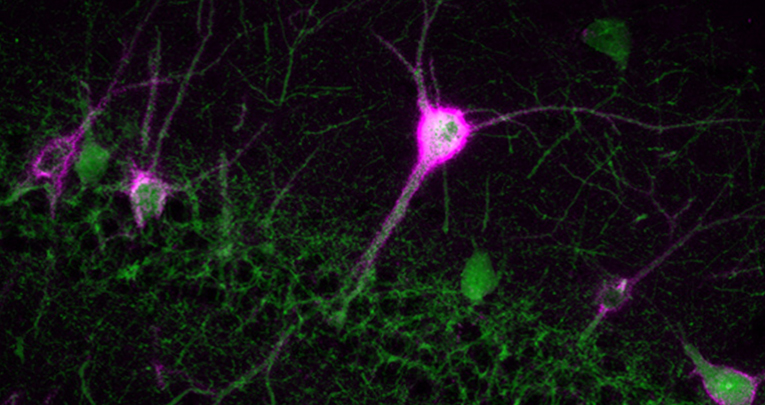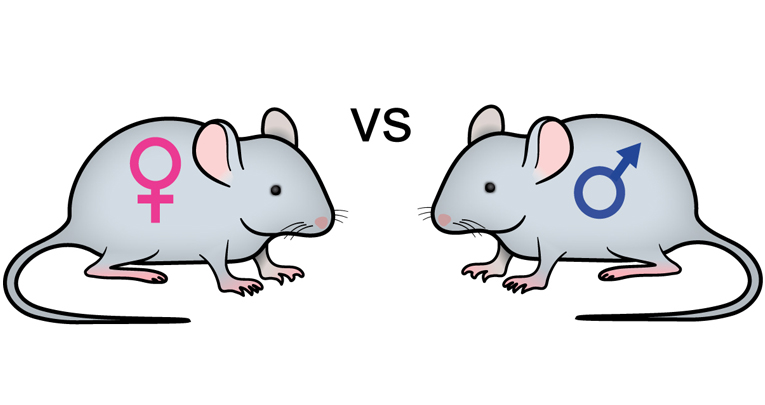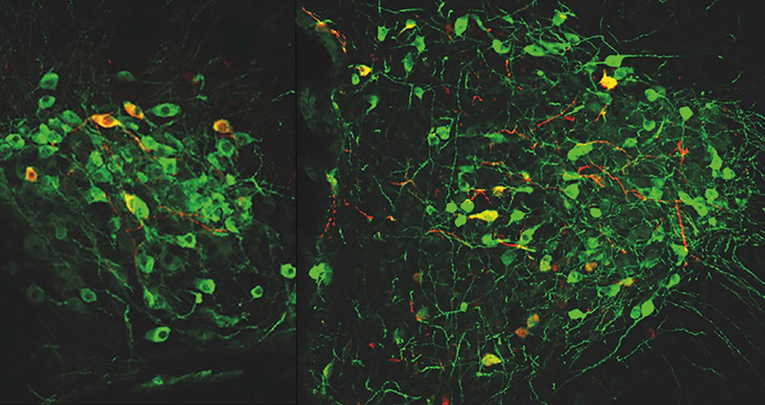Acting Group leader: Ilaria Bertocchi

Main goal
The focus of our research is delineating the neural circuitry underlying anxiety, stress response and mood at molecular and cellular levels. A second emphasis of our research is to understand how emotional behavior influence appetite, body weight and energy balance.
We are particularly interested in neuropeptide Y (NPY) and its Y-receptors (Y1 and Y5), since many of the molecules that regulate emotional and feeding behavior interact with NPY-ergic system in the limbic system and the hypothalamus.
Experimental models
NPY is widely distributed in the brain and has effects on anxiety, stress and ethanol consumption similar to those of positive modulators of the GABAA receptor. Our lab has a number of conditional knockout and transgenic models that allow us to identify the extent to which Npy1r and Y5R contribute to anxious behavior, mood and neuroendocrine functions.
Along these lines, we provided experimental genetic evidence that limbic Y1Rs are required for regulation anxiety, hypothalamus-pituitary-adrenal (HPA) axis activity and body weight. Importantly, through fostering experiments, we determined that neuronal NPY/Y1R pathways in the limbic system are key targets of maternal care-induced programming of anxiety and energy homeostasis. We intend to investigate further the function of Npy1r mediated signaling in maternal care modulation of structural plasticity of the limbic system.
We also demonstrated that mice with the conditional ablation of limbic Npy1r show increased susceptibility to a metabolic-like syndrome (MetS) in a sex dependent manner. Additional studies focus is to understand whether estrogen modulation of NPY system in the limbic nuclei and in the hypothalamus may contribute to the sex-related differences in maintaining energy homeostasis. Defects in the brain pathways that regulate these processes may be responsible for metabolic disorders.
Research projects
- Mice with the conditional ablation of the limbic Npy1r gene: an experimental model to study of gene-perinatal environment interaction in vulnerability to stress and anxiety disorders.
- Role of Npy1rs expressed in Npy5r containing neurons of the orbifrontal cortex in behavioral inflexibility.
- Role of the NPY-Npy1r system in the different vulnerability to MetS of the two sexes.
Methodological approaches
- Gene targeting and recombinant DNA techniques.
- Behavioral analysis (tests for anxious and inflexible behavior, feeding behavior, memory and cognition, exploratory behavior and locomotor activity).
- Transgenic and KO models.
- Immunocytochemical analysis, in situ hybridization and quantitative analysis in the central nervous system, with special reference to NPY, NPY receptors, stress and feeding peptides, plasticity brakes (perineuronal nets).
- Laser dissection microscopy.
- In vitro and in vivo analysis of reporter gene expression.
- Pharmacological manipulations of gene expression and behaviour.
S&P BRAIN
Services and Products for preclinical proof of concepts
Our spinoff provides scientific expertise, animal models, equipment and facilities to pharmaceutical, biotechnology, and medical device Companies and to Research Centers for proof–of-concept or pilot in vivo studies.
News
NPY-Y1 receptor signaling controls spatial learning and perineuronal net expression
Neuropharmacology , December 2020
Ilaria Bertocchi, Paolo Mele, Giuliano Ferrero, Alessandra Oberto, Daniela Carulli, Carola Eva
Sex differences in behavioral and metabolic effects of gene inactivation: The neuropeptide Y and Y receptors in the brain
Neuroscience & Biobehavioral Reviews , December 2020
Eva C, Oberto A, Longo, Palanza, Bertocchi I
Conditional inactivation of Npy1r gene in mice induces sex-related differences of metabolic and behavioral functions
Hormones and Behavior , September 2020
Ilaria Bertocchi, Alessandra Oberto, Angela Longo, Paola Palanza, Carola Eva
A Fear Memory Engram and its Plasticity in the Hypothalamic Oxytocin System.
Neuron
, 29 May 2019
Mazahir T. Hasan et all.










